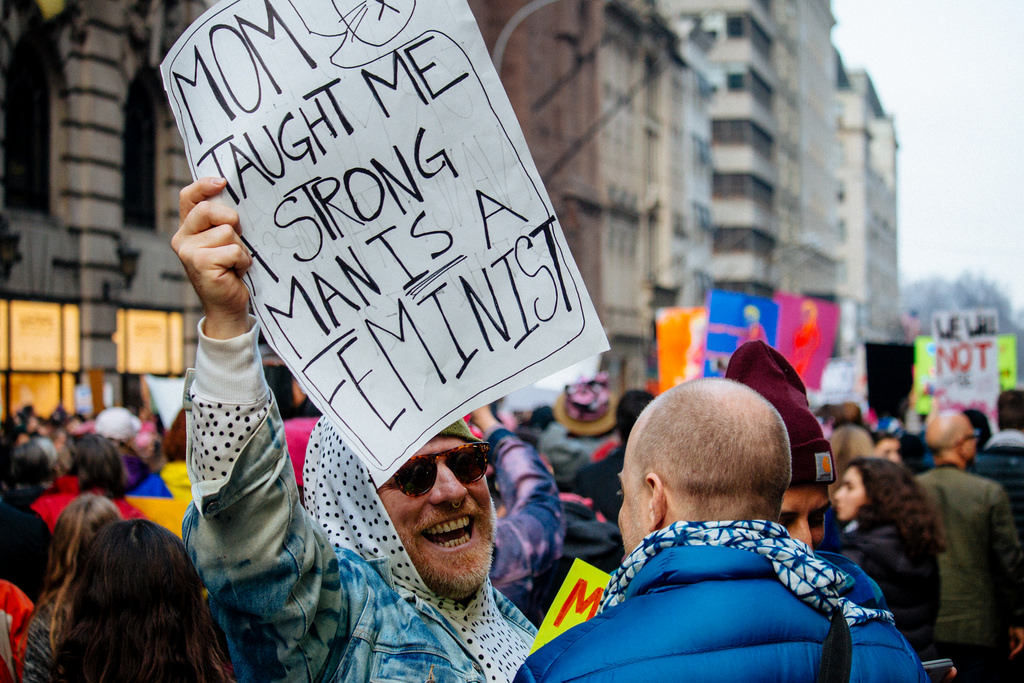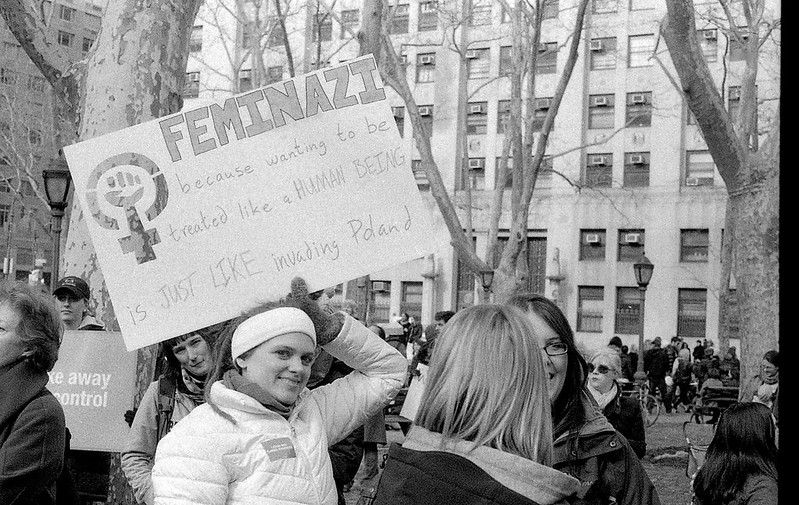Updated Dec. 9 at 4:00 p.m. PT.

On Sunday afternoon, July 19, a white, anti-feminist men’s rights activist and lawyer Roy Den Hollander dressed up in a FedEx uniform and went to the house of New Jersey federal judge Esther Salas—the first Latina appointed to be a federal judge in New Jersey. Judge Salas had presided over a case brought by Hollander, challenging the U.S. government’s male-only military draft registration requirement.
When the door opened, Hollander shot Judge Salas’s 20-year-old son dead and seriously wounded her husband, then fled. Judge Salas was in the basement at the time.
On Wednesday, Dec. 9, in an op-ed for the New York Times, Judge Esther Salas called for the Senate to pass the Daniel Anderl Judicial Security and Privacy Act. (Similar legislation was introduced in the House of Representatives on Oct. 13.) The legislation would safeguard federal judges’ personal information—like their address and names of their family members—which, if made public, leave judges vulnerable to potential violence.
“This tragedy, every mother’s worst nightmare, happened for a reason wholly unrelated to either my husband or my son, but because of my job: I am a United States District Court judge.
“The bipartisan bill would protect judges’ personally identifiable information from resale by data brokers. It would also allow federal judges to redact personal information displayed on federal government internet sites and prevent publication of personal information by other businesses and individuals where there is no legitimate news media interest or matter of public concern …
“A determined killer will always be difficult to stop, but we make it far too easy to locate judges. Removing our personally identifiable information from the internet is a critical first defense.”
Following the July murder, Hollander was later found dead about two hours north of Judge Salas’s home in an apparent suicide.
The 72-year-old Ivy League-educated, former New York corporate lawyer had been a member of the San Diego-based men’s rights organization—the National Coalition for Men. He had for years filed lawsuits alleging gender discrimination against men. He challenged the constitutionality of “ladies night” promotions at bars and nightclubs, sued Columbia University for its women’s studies classes, and sued news organizations over what he said was biased coverage against Trump during the 2016 election.
In 2008, he filed a suit against the federal government, alleging the Violence Against Women Act was unconstitutionally biased against men.
Hollander reportedly carried around a typed, 41-point list headed “Discrimination against men in America.” He complained feminists had “infiltrated institutions, and there’s been a transfer of rights from guys to girls.”
In a 2018 ruling, Judge Salas allowed Hollander’s case to go forward, but he criticized her for not moving the case along quickly enough. He called her “a lazy and incompetent Latina judge appointed by Obama.”
“This man seems to have been especially unbalanced, but the incident nonetheless offers a tragic illustration of how violence lurks very close to the surface for some of these men,” pro-feminist scholar and educator Jackson Katz told Ms.
“It is directly related to how violence is used by abusive men in heterosexual relationships with women. It is a very effective means of gaining compliance: ‘If I can’t get my way by any other means, I’m going to get it through the threat of violence or the actual enactment of violence.’”
Hollander follows in a long line of anti-feminist men who commit murder, such as Marc Lépine and Elliot Rodger. In his 1989 “Montreal massacre,” Lépine shot 30 rounds of ammunition into a group of female students at an engineering school in Montreal, while yelling, “You’re all feminists!”
In 2014, Elliot Rodger killed six people and injured 14 others in Isla Vista, Calif., after distributing a 141-page document describing his deep-rooted loathing of women. Like Hollander, Lépine and Rodger both killed themselves after murdering others.
And just as mass shooters often have histories of domestic violence, so did Hollander. His former wife accused him of abuse and harassment, including revenge porn. In 2001, she filed a New York domestic incident report, alleging that he violated a protective order by stealing her diary and posting it on the internet along with nude photos. He stalked her and doxxed her for years.
Hollander, who was a Trump supporter and volunteer, posted a 2,028-page collection of writings on his website containing deeply misogynist and racist rants about women, whom he called “feminazis.” He characterized feminists as an “evil that wants to exercise totalitarian power over” men. He said men “have a right to revolt against that tyranny, to take it down.” He also threatened that “Feminists should be careful in their meddling with nature. There are 300 million firearms in this country, and most of them are owned by guys.”

Just as Lépine left a list of nineteen names of “radical feminists” he would have killed but for “lack of time,” police found in Hollander’s car the names of other female judges he may have planned to target, including New York State’s chief judge Janet M. DiFiore.
Hollander was part of the anti-feminist men’s rights movement, which advocates for a male supremacist ideology the Southern Poverty Law Center (SPLC) describes as “a thinly veiled desire for the domination of women and a conviction that the current system oppresses men in favor of women.”
A Voice for Men is the largest and most influential men’s rights organization. Hollander published on their website. But the movement has many branches, including:
- father’s rights groups, focusing on ex-wives, alimony payments, and child custody issues;
- pick-up artists, teaching men how to be effective sexual predators;
- involuntary celibates or “incels,” who believe men deserve to have sex with any woman they choose; and
- MGTOW—“men going their own way,” a mostly online community advocating for men to separate themselves from women and from a society which they believe has been destroyed by feminism.”
The 60,000-plus member online community called the Red Pill uses a metaphor from “The Matrix” to refer to the moment one comes to believe that men are oppressed. Most men’s rights activists are white, middle-class, heterosexual men.
While there is often hostility among the different subgroups, SPLC reports the “unifying thread is virulent, at times violent misogyny, and the practice of blaming women and a large feminist conspiracy for the ills of (mostly white) men today.”
Male supremacist ideology “is driven by the belief that men are entitled to a superior place in society than women, which are biologically and intellectually inferior—as a result, any advancement that women might have obtained is nothing more than a usurpation. Like white supremacy, male supremacy is driven by fear and anger at the loss of white male status.”
This misogyny is often interlaced with implicit or explicit threats of violence.
“Violence is a critical part of that ideology,” says Katz. “If I can’t get what I want through persuasion, I will use violence, or the implicit threat of violence of it. Even if a man doesn’t use violence, the threat of violence hangs in the air as the ultimate way to get what he wants.”
Many men’s rights activists have an “aggrieved entitlement” that they use to justify misogyny and violence, says sociologist Michael Kimmel, author of “Angry White Men“: “If you feel entitled and you have not gotten what you expected, that is a recipe for humiliation.”
When they see women around them who have succeeded when they haven’t, they blame women for their failures, feel aggrieved, and use violence, or the threat of violence, to get back at them.
“If you grow up with the expectation that the world should be organized in your favor,” says Katz, “and there’s a deep cultural belief in a natural hierarchy with white men residing at the top of that hierarchy, and you’re growing up from the earliest moments of your life being taught that, and then seeing it slip away, then there’s a real feeling that something is being taken away. Even though objectively they didn’t deserve it in the first place, that’s not their lived experience—that’s not their subjective emotional experience.”
Anti-feminist men’s rights activists often attack efforts to address violence against women, as Hollander did in his lawsuit challenging the Violence Against Women’s Act, inaccurately contending that women engage in intimate partner violence against men as often or more than men do against women.
In her book “Equality with a Vengeance: Men’s Rights Groups, Battered Women, and Antifeminist Backlash,” scholar Molly Dragiewicz argues antifeminist men’s groups use the “language of gender neutrality to attack programs created to ameliorate the outcomes of gendered inequality. These discourses proclaiming sex symmetry in violence against intimates serve to reproduce the conditions that enable violence by silencing those most adversely affected, obscuring structural contributing factors, and echoing abusers.”
According to SPLC, the most established proponents are the virulently misogynistic website A Voice for Men, started by Paul Elam (“male” spelled backwards), and the Return of Kings, founded by pick-up artist Roosh V. The SPLC designates both as hate groups and describes male supremacist ideology as the “gateway drug” for the racist alt-right.
Australian scholar Michael Flood maintains a comprehensive website of scholarship about men’s rights movement, including resources on the links between anti-feminist men’s rights activists and the alt-right.
Hollander, who was 72 and had a fatal cancer diagnosis, may have felt he had nothing to lose. In addition to the murder of Judge Salas’s son, Hollander is also the top suspect in the murder of a rival men’s rights activist—lawyer Marc Angelucci, the vice president of the group National Coalition for Men. On July 11, a man posing as a FedEx delivery person shot Angelucci to death at his home in California. Investigators suspect that Hollander may have been jealous of Angelucci, who won a military draft case before Hollander could win his case before Judge Salas.
Men’s rights activists are now trying to distance themselves from Hollander, claiming he is not one of them. But his long-term involvement in their movement, past membership in one of their leading organizations, and use of their ideology and rhetoric proves them wrong.
The irony of a men’s rights activist murdering two men to get back at feminists goes to show, no one is safe from violent misogyny. Toxic masculinity kills. Male supremacist ideology and behavior, which often intersects with white supremacy as in the case of Hollander’s racist misogyny toward Judge Salas, have been tolerated for far too long in American society.
Whether in the streets or in our homes, in front of women’s reproductive health clinics or in the halls of government, whether online or in person, we must finally start taking misogyny seriously, in word and in deed.





